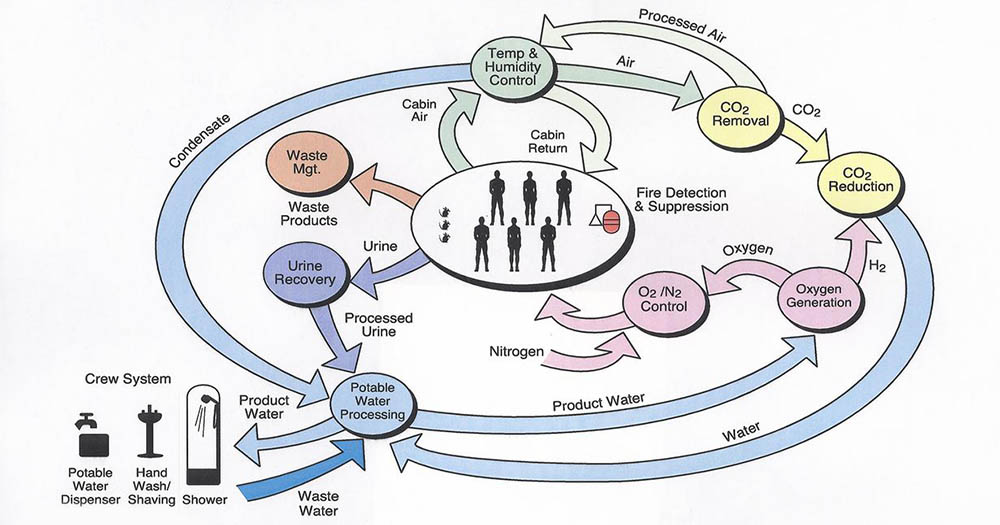Illustration: ISS (International Space Station) ECLSS ( Environmental Control and Life Support System) diagram
The architecture of a large interstellar spaceship, which is capable of serving as a living environment for a population over many generations, is mainly dictated by the needs of said population in terms of food, water and breathable gases These resources cannot be stored for the entire duration of a journey that goes on for several centuries, so they must be produced in situ. In order to determine the quantities necessary for the survival of the population, it is imperative to precisely estimate their needs.
In the article Water And Air Consumption Aboard Interstellar Arks the authors focus on accurate simulations of the water and air requirements for any type of population in order to be able to provide precise constraints on the overall architecture of an interstellar ark. Their simulations show that, for a crew of about 1100 crew members (each characterized with individual anthropometric and biological data), 108 billions liters of oxygen are annually required, together with 1.1 million liters of water. Those results do not account for oxygen and water used in growing plants, but they give us an insight of how much resources are needed in the spaceship.
They also review the best methods for generating water from waste gases (namely carbon dioxide and dihydrogen) and how such system could complement the oxygen-supplying biospheres inside multi-generational spaceships to form a closed and controlled environment.

